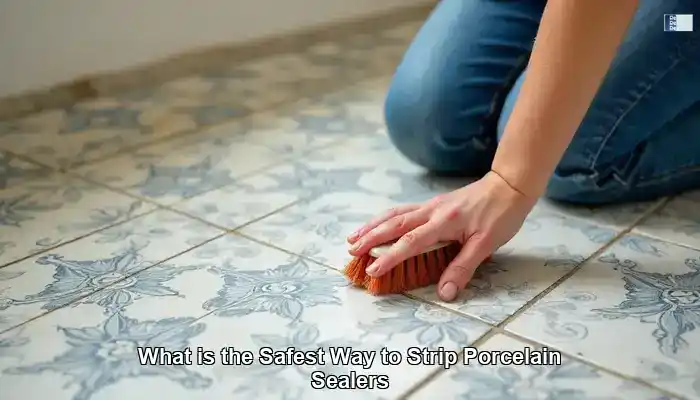
Comprehensive Guide to Porcelain Sealers: Key Insights for Homeowners and Professionals
Porcelain sealers are essential for preserving the durability and visual appeal of porcelain surfaces. These protective coatings not only enhance the beauty of tiles, countertops, and decorative items but also significantly extend their lifespan by creating a robust barrier against wear and tear. In the UK, where porcelain is widely favored in both residential and commercial settings, it is vital for homeowners and industry professionals to gain a comprehensive understanding of the various types of sealers available. This knowledge empowers them to make informed choices that will protect their investments over time.
Analyzing the Advantages of Impregnating and Topical Sealers for Porcelain Tiles

In the UK, the most commonly used sealers for porcelain surfaces are impregnating (or penetrating) sealers. These specialized formulations deeply infiltrate the material of the tile, providing robust internal protection while preserving the natural aesthetic of the tile. Impregnating sealers are particularly effective in resisting moisture and staining, making them suitable for a wide range of applications, both indoors and outdoors, ensuring that your surfaces maintain their beauty and functionality.
Top Recommendations: Products for Cleaning and Sealing Your Porcelain Tiles
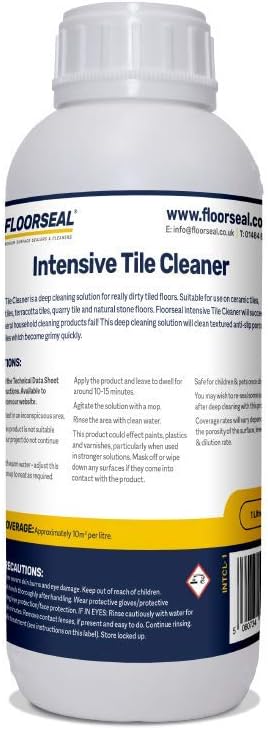
Floorseal
Intensive Tile Cleaner
|

EcoProtect
Porcelain Tile Sealer
|
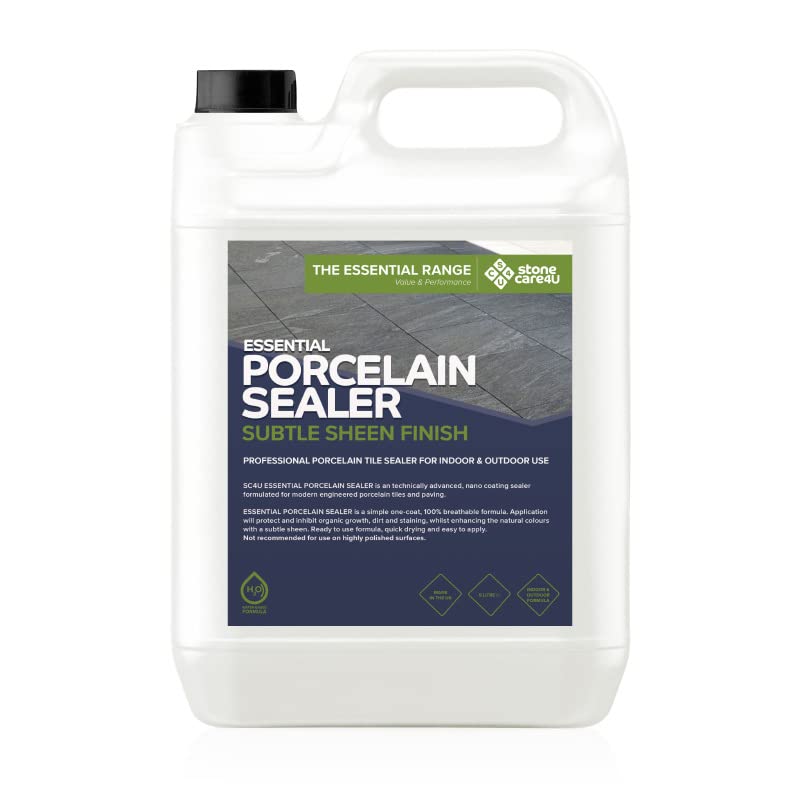
Stonecare4U
Essential Porcelain Sealer
|
Topical sealers apply a thin protective layer on the surface of porcelain tiles, establishing a barrier that rests on top of the tile rather than penetrating it. Given that porcelain is a dense, non-porous material, traditional sealers designed for porous surfaces typically struggle to adhere effectively. Thus, topical sealers specifically formulated for porcelain include adhesion promoters, which ensure effective bonding to the smooth, glossy finish of the tiles for enhanced durability.
-
Generally, topical sealers can be either solvent-based or petroleum-based, as these formulations are more effective in adhering to low-porosity surfaces like porcelain. However, there is a growing trend towards water-based options as a response to increasing environmental awareness.
-
The primary mechanism for adhesion relies on mechanical bonding—the formation of a surface film—rather than absorption into the tile’s pores.
-
To ensure proper bonding, the tile surface must be clean, dry, and free from debris or residues before applying any sealer.
-
After applying the sealer—typically through methods such as spraying or wiping—it is crucial to allow adequate curing time. Neglecting this step may lead to peeling or ineffective adherence of the sealer.
-
Regular maintenance is vital, as the topical layer can deteriorate over time, necessitating reapplication to preserve its protective qualities.
If a topical sealer is not specifically designed for porcelain or if application guidelines—including proper cleaning and curing—are not followed, the sealer may struggle to bond effectively and could peel prematurely. Always consulting the manufacturer’s instructions is advisable to achieve optimal results in protecting your surfaces.
The Indispensable Role of Sealers in Preserving Porcelain Surfaces
Applying sealers to porcelain surfaces transcends mere cosmetic enhancement; it is a fundamental measure to ensure the durability and longevity of the material. Many manufacturers claim porcelain is non-porous; however, instances arise where tiles demonstrate micro-porosities due to inconsistent or substandard manufacturing processes—defects often overlooked by manufacturers. These concealed vulnerabilities render the tiles susceptible to staining, moisture infiltration, and long-term damage, necessitating the use of effective sealers.
This is why employing an impregnating (penetrating) sealer is regarded as best practice. It permeates the tile, forming an invisible barrier beneath the surface that blocks impurities and moisture without altering the finish. Particularly in the UK’s damp climate, especially within older structures, this protective layer is crucial in preventing discoloration and preserving the tile’s aesthetic and functional characteristics. Furthermore, penetrating sealers can accentuate the tile’s natural beauty, making them an ideal choice for decorative applications where appearance is paramount. Selecting the appropriate sealer not only safeguards your tiles but also ensures they perform optimally for many years to come.
Identifying Signs That Your Porcelain Sealer Needs Attention
Recognizing when a porcelain sealer requires stripping or reapplication is vital for maintaining the quality of your surfaces. Key visual indicators to monitor include discoloration or dullness, both of which indicate that the sealer has lost its effectiveness. Additionally, if water fails to bead on the surface, it clearly suggests that the protective layer is compromised and needs prompt attention.
Since sealers are often invisible, detecting wear and degradation can be challenging without conducting specific tests. Tactile changes, such as a rough or sticky texture, may indicate that the sealer has deteriorated; however, these signs can be subtle. Homeowners should routinely perform a simple water droplet test: place several drops on the tile surface. If the water spreads and absorbs, it indicates that the sealer has worn away. Conversely, if the droplets bead up, the protective layer remains intact and effective.
Prioritizing Safety in the Porcelain Stripping Procedure
When engaging in the process of stripping porcelain sealers, prioritizing safety is of utmost importance. The task often involves using chemical products that require careful handling and the implementation of appropriate safety measures to ensure a secure working environment for everyone involved.
Essential Protective Equipment for Safe Stripping of Porcelain Sealers
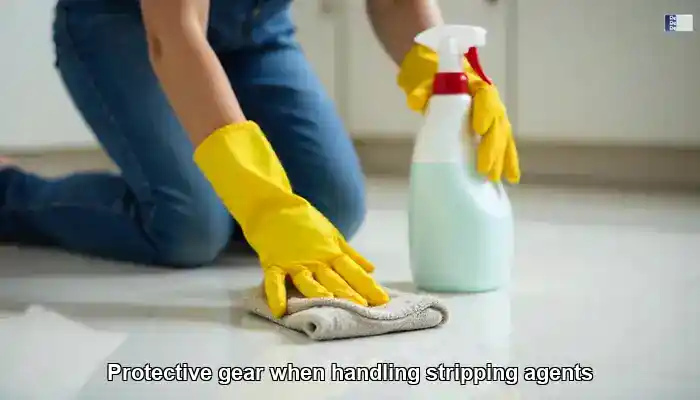
Utilizing the correct protective equipment is crucial when handling sealers and stripping agents. At a minimum, individuals should wear gloves to protect their hands from harsh chemicals that may cause skin irritations or allergic reactions. Safety goggles are also essential to safeguard the eyes from any splashes or potentially harmful fumes that could result in serious injuries.
A properly fitting mask or respirator is highly recommended to avoid inhaling harmful vapors. In the UK, where strict regulations govern the handling of chemicals, ensuring the proper use of protective gear is vital for personal safety and compliance with health regulations. Remember, it is always better to take preventive measures than to deal with the repercussions; investing in high-quality protective equipment can prevent potential hazards.
Establishing Adequate Ventilation During the Stripping Process
Effective ventilation is critical when using chemical strippers, especially indoors. The fumes produced by these products can pose health risks, leading to respiratory issues or chemical exposure. It is advisable to open windows and doors to create a cross-breeze, facilitating the circulation of fresh air. In smaller areas, utilizing fans to direct vapors outside can further enhance safety.
Whenever feasible, it is best to conduct stripping work outdoors or in well-ventilated garages or sheds. The unpredictable UK weather may not always allow this, but planning for adequate ventilation can greatly increase safety. Always remain vigilant regarding air quality; if the fumes become overwhelming, take a break and step outside until it is safe to continue your work.
Adhering to Safe Chemical Handling Procedures
When working with chemical strippers, following the manufacturer’s guidelines is essential to minimize risks. Always carefully read the labels and instructions, as they contain vital information regarding safe usage, including dilution ratios and specific applications. In the UK, regulations exist regarding the disposal of chemical waste, and it is crucial to adhere to these guidelines to protect both human health and the environment.
Furthermore, ensure that all chemical products are stored securely, out of reach of children and pets. Familiarize yourself with the appropriate disposal methods for any unused products or residues; many local councils in the UK offer hazardous waste collection services to facilitate safe disposal. By adhering to these guidelines, you not only create a safer working environment but also protect your health and the well-being of those around you.
Comprehending Chemical Strippers for Porcelain Sealers
Chemical strippers are widely utilized for removing porcelain sealers; however, selecting and using them judiciously is crucial to prevent unintended damage. Understanding the various formulations and their specific strengths can streamline the stripping process while enhancing safety and efficacy.
Selecting the Most Suitable Chemical Stripper for Your Needs
In the UK, chemical strippers come in various formulations:
- Solvent-based strippers are fast-acting and highly effective at removing stubborn residues; however, they emit strong fumes and require strict safety precautions. These are best suited for professional use in well-ventilated environments.
- Bio-based strippers, made from natural ingredients, are gentler on both users and the environment. While safer, they typically require longer dwell times to achieve the desired results.
- Water-based strippers present a balanced option—lower in toxicity and suitable for indoor usage where air quality and user safety are paramount.
It is crucial to verify that the chosen product is compatible with porcelain, as using incorrect formulations can damage the tile surface, leading to costly repairs.
Essential Tools for Effectively Stripping Sealers from Porcelain
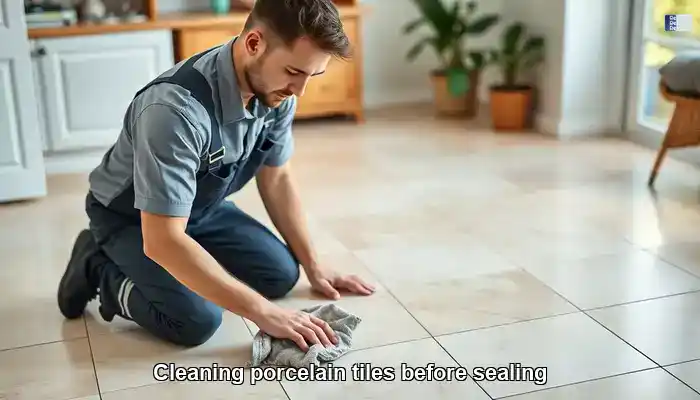
For most stripping projects, it is important to note that impregnating sealer residues do not require complete removal, as these typically reside deep within the pores of the tile. The primary focus should instead be on thorough cleaning. Utilize a high-quality alkaline cleaner to eliminate surface contaminants such as dirt, grease, and oil, ensuring proper adhesion for any new sealers applied to the tiles and grout without disturbing the protective layer already embedded.
Effective Techniques for Applying Chemical Strippers
Applying chemical strippers requires a meticulous approach to ensure both safety and effectiveness. Begin by preparing the work area; remove any furniture or items that could potentially sustain damage. Use a paintbrush or roller to evenly apply the stripper across the surface, ensuring a thick, uniform layer for optimal effect.
Allow the chemical to dwell for the recommended duration specified on the product label. This waiting period is crucial, as it enables the stripper to penetrate the sealer thoroughly. Once the designated time has elapsed, carefully use a scraper to remove the dissolved sealer. Exercise caution to avoid scratching the porcelain surface; a plastic scraper is often the best choice for this task to minimize the risk of damage.
Always consult the specific guidelines for the chemical being utilized, as application techniques can differ. Understanding the safest way to strip porcelain sealers not only ensures successful completion of the task but also protects the integrity of your porcelain surfaces, allowing them to shine as intended.
Neutralizing and Cleaning Up After the Stripping Process
Once the stripping procedure is complete, it is critical to neutralize any residues left behind to prepare the surface for re-sealing. Many chemical strippers require neutralization with water, whereas others may necessitate specific neutralizing agents. Strictly adhere to the product instructions for optimal results to ensure the surface is ready for the next steps.
After neutralization, thoroughly clean the area to eliminate all traces of the stripper. This step is essential, as any remaining chemicals can interfere with the application of new sealers. Use clean water and a mop or rag to wipe down the surface, ensuring that it is free from dirt and chemical remnants. Proper cleanup is vital to guarantee that the newly sealed surface adheres effectively and performs at its best, prolonging the life of your investment.
Leveraging Mechanical Agitation Techniques for Enhanced Stripping Efficiency
While chemical strippers are fundamental for removing porcelain sealers, mechanical agitation serves a supportive role—especially in accelerating the action of the chemical rather than abrading the tile surface. Given that porcelain is dense and often glazed, abrasive methods, such as sandpaper, scrapers, or steel wool, are not recommended, as they can inflict permanent damage to the surface and compromise its visual appeal.
Implementing Safe Mechanical Agitation Techniques
Mechanical agitation should primarily focus on enhancing the effectiveness of chemical strippers, particularly in textured areas and grout lines. The most effective techniques include:
- Stiff bristle brushes for manual scrubbing of grout and textured regions.
- Red pads on a rotary floor machine for gentle agitation over larger surfaces.
- Detail brushes or white pads for intricate edge work without risking damage to the tile finish.
These tools assist in breaking down sealer residues and embedded contaminants without causing harm to the tile. Always allow the chemical to dwell for the recommended duration before initiating agitation. Rushing the process or overworking the surface may reduce effectiveness and increase the risk of errors, making it essential to follow best practices for optimal results.
Prioritizing Safety During Mechanical Agitation
Safety should always be at the forefront when employing mechanical methods. It is essential to wear eye protection to guard against debris and dust. Gloves are also advisable to protect your hands from cuts or abrasions during the process. Maintaining a clean workspace minimizes the likelihood of accidents, so ensure that any dust or residue is promptly cleared away to enhance overall safety.
Consider using a dust mask to avoid inhaling fine particles, particularly when sanding or working with materials that generate dust. Additionally, confirm that the porcelain surface is securely attached to prevent any movement during the stripping process. Adopting these safety precautions will not only protect you but also enhance the overall effectiveness of your work, ensuring that your porcelain surfaces remain in excellent condition.
Maintenance and Proper Storage of Tools After Use
Once the stripping job is complete, it is crucial to maintain your tools to ensure their longevity and effectiveness. Clean all abrasive tools thoroughly after use, ensuring that any sealant residue that may have accumulated is removed. Store them in a dry environment to prevent rust or degradation, particularly for metal scrapers that are susceptible to corrosion.
Investing in high-quality tools can significantly influence the success of future projects. Regularly inspect your equipment for wear and tear to determine when replacement is necessary. Keeping your tools in optimal condition is essential for achieving the best results each time you engage in a project, including learning about the safest way to strip porcelain sealers effectively and efficiently.
Exploring Eco-Friendly Alternatives for Stripping Porcelain Sealers
As awareness of environmental issues continues to grow, many individuals in the UK are actively seeking eco-friendly alternatives for stripping porcelain sealers. These options can be less harmful while still achieving effective results, aligning with sustainable practices.
Natural Strippers: A Sustainable and Safe Choice for Your Home
Natural strippers commonly utilize plant-based ingredients to break down sealers without the harsh chemicals associated with traditional products. In the UK, options made from citrus or soy are becoming increasingly popular. These alternatives are generally safer for both users and the environment, producing minimal harmful fumes and residues during use.
Moreover, many natural strippers can be effectively used indoors without the same toxic exposure concerns that accompany their chemical counterparts. However, it is important to note that while they are less harmful, natural strippers may require longer application periods to achieve the desired results compared to stronger chemical strippers, necessitating a bit more patience.
Application Techniques for Effective Use of Natural Strippers
Applying natural strippers follows a methodology similar to conventional methods. Use a brush or roller to evenly coat the surface, allowing sufficient time for the product to penetrate and work effectively. It is crucial to adhere to the manufacturer’s instructions regarding application time, as different products can vary significantly in their effectiveness.
After the natural stripper has completed its task, utilize a soft cloth or scraper to remove the sealer, exercising care to avoid damaging the porcelain surface. Rinse thoroughly with water to ensure all stripper residues are eliminated before allowing the surface to dry completely, ensuring optimal conditions for any subsequent treatment.
Effectiveness and Limitations of Eco-Friendly Stripping Options
While eco-friendly methods present a safer alternative, they do come with certain limitations compared to traditional chemical strippers. For heavy-duty stripping tasks, natural products may not deliver the same speed or efficacy, requiring additional effort and time to achieve satisfactory results.
Nevertheless, for routine maintenance or lighter sealing applications, eco-friendly strippers can be more than adequate. They are especially beneficial for those who are conscious of their environmental footprint and wish to minimize exposure to harsh chemicals. Understanding what is the safest way to strip porcelain sealers, with an emphasis on eco-friendly alternatives, seamlessly aligns with a sustainable lifestyle, promoting healthier home environments.
When to Opt for Professional Services in Porcelain Sealer Stripping
In certain scenarios, hiring professionals for stripping porcelain sealers may be the most prudent choice. Recognizing when to call in experts can save your time and prevent potential damage to your surfaces, ensuring that the job is done correctly and efficiently.
Key Indicators That Professional Stripping Services Are Needed
There are specific situations where professional services for stripping porcelain sealers are strongly recommended. If the porcelain surfaces are extensive or intricate, attempting to manage the task without proper experience can lead to costly errors. Moreover, if the prior sealing job involved multiple layers or particularly resilient sealers, employing a professional’s expertise can ensure a thorough and safe removal process.
Another significant reason to consider hiring professionals is if you lack familiarity with handling chemicals or mechanical tools. The risks associated with improperly using chemical strippers or abrasives can result in serious damage or health complications. In such cases, seeking professional assistance not only alleviates concerns but also guarantees a satisfactory outcome that meets your expectations.
How to Choose a Reliable Service Provider for Stripping
When selecting a professional service for stripping porcelain sealers in the UK, it is essential to seek out reputable companies with established track records. Online reviews, testimonials, and recommendations from friends or family can provide valuable insights into the service quality and reliability. Ensure that the provider is properly licensed and insured, as this protects you from potential liabilities during the stripping process.
It is also wise to inquire about the methods and products they utilize to ensure alignment with your preferences, particularly if you are interested in eco-friendly options. A responsible service provider will be transparent regarding their processes and willing to address any questions you may have about their procedures.
Understanding the Professional Stripping Process
Engaging professionals for stripping porcelain sealers typically involves a systematic approach. Initially, they will assess the condition of the porcelain and the type of sealer that has been applied. This evaluation helps them determine the most effective method for stripping the sealer without damaging the tile.
Once the assessment is completed, the professionals will prepare the work area, protecting surrounding surfaces from dust and damage. They will then proceed with the stripping process using their chosen technique, whether chemical or mechanical, ensuring safety and efficiency throughout the operation. After completing the stripping, they will clean the area meticulously and may provide recommendations for re-sealing or maintenance to keep your surfaces in pristine condition.
Understanding Costs Associated with Professional Stripping Services
Gaining insight into the costs associated with professional porcelain sealer stripping services in the UK is crucial for effective budgeting. Prices can vary significantly based on factors such as the size of the area, the type of sealer being removed, and the methods employed by the service provider. On average, homeowners can expect to pay between £100 and £300 for professional stripping services, depending on these variables and the complexity of the job.
Keep in mind that while hiring professionals may seem costly upfront, it can ultimately save you money by preventing damage that could arise from DIY attempts. It is advisable to obtain quotes from multiple service providers to ensure you secure the best value for your investment, allowing for informed comparisons and decisions.
Ensuring Compliance with Legal and Safety Standards in Professional Services
It is imperative that the chosen professional service adheres to UK regulations and safety standards for stripping porcelain sealers. Reputable companies will comply with all pertinent health and safety regulations, ensuring a secure working environment for both their employees and clients during the stripping process.
Do not hesitate to inquire about their safety protocols and environmental practices. A responsible service provider will prioritize safety and sustainability, aligning with your values. This not only safeguards you during the stripping process but also contributes to a safer community and environment, ensuring peace of mind for all parties involved.
Post-Stripping Maintenance for Optimal Care of Porcelain Surfaces
Once the stripping process has been finalized, proper care of the porcelain surface is essential for preserving its beauty and durability. Following the correct procedures ensures that the freshly stripped surface is adequately prepared for re-sealing or other treatments that may enhance its performance.
Thorough Cleaning of the Stripped Surface After Treatment
Cleaning the surface meticulously after stripping is crucial to remove any remaining residues and ensure that the new sealant adheres effectively. Start by rinsing the area with clean water to wash away any lingering chemicals or dust that may interfere with the adhesion of the new sealer. For stubborn residues, a soft cloth or non-abrasive sponge may be necessary to prevent scratching the porcelain during the cleaning process.
Once cleaned, allow the surface to dry thoroughly before applying a new sealer. This ensures that no moisture is trapped beneath the sealant, which could lead to future issues such as mold growth or peeling. Regular maintenance and cleaning of stripped surfaces will help them maintain their attractiveness and functionality for years to come.
Frequently Asked Questions About Porcelain Sealers and Stripping
What is the safest way to strip porcelain sealers?
The safest approach involves utilizing protective gear, ensuring proper ventilation, and selecting suitable stripping methods, whether chemical or mechanical. Always adhere to the manufacturer’s instructions to achieve the best results while protecting your surfaces.
How frequently should I strip and reapply porcelain sealers?
Stripping and reapplying porcelain sealers typically depends on the level of wear and tear observed on the surface. Generally, inspecting surfaces every 1-3 years is recommended; however, it is also wise to check them regularly for signs of deterioration or effectiveness loss.
Can I strip sealers myself, or should I hire a professional for the task?
This decision depends on your experience and the size of the area involved. DIY methods are suitable for smaller, straightforward jobs, but professionals are advisable for larger or more complex projects to ensure thoroughness and safety.
What are the environmental impacts of using chemical strippers?
Chemical strippers can release harmful fumes and pollutants into the environment. Eco-friendly alternatives are available that minimize environmental impact and reduce exposure risks for users and surrounding communities.
How can I determine if my porcelain sealer needs stripping?
Indicators of a sealer needing attention include discoloration, dullness, or if water fails to bead on the surface. These signs suggest that the sealer’s effectiveness has diminished and that the surface requires immediate care.
Are eco-friendly strippers effective?
Yes, eco-friendly strippers can be effective, especially for lighter applications. However, they may take longer than traditional chemical strippers for more demanding tasks, so patience and diligence are essential.
What protective gear do I require for stripping sealers?
Essential protective equipment includes gloves to shield your hands, safety goggles to protect your eyes, and a mask to prevent inhalation of fumes and exposure to harsh chemicals during the stripping process.
How should I dispose of chemical strippers?
Always follow local regulations for the disposal of hazardous waste. Many councils in the UK provide collection services to ensure the safe disposal of chemical products, promoting environmental responsibility.
What maintenance is required after stripping?
Post-stripping maintenance involves thoroughly cleaning the surface and ensuring it is properly dried before reapplying any new sealers, which is vital for optimal adhesion and performance of the new treatment.
Can mechanical methods damage porcelain surfaces?
Yes, improper use of mechanical methods can indeed damage porcelain. Always utilize appropriate tools and techniques to minimize the risk of scratches, chips, or other forms of surface damage.
The article Porcelain Tile Nightmare: How to Strip Sealers Without Ruining Your Floor was first found on https://www.abbeyfloorcare.co.uk
The Article Stripping Sealers from Porcelain Tile Without Damage appeared first on https://fabritec.org
The Article Stripping Sealers Without Damaging Porcelain Tile Was Found On https://limitsofstrategy.com

